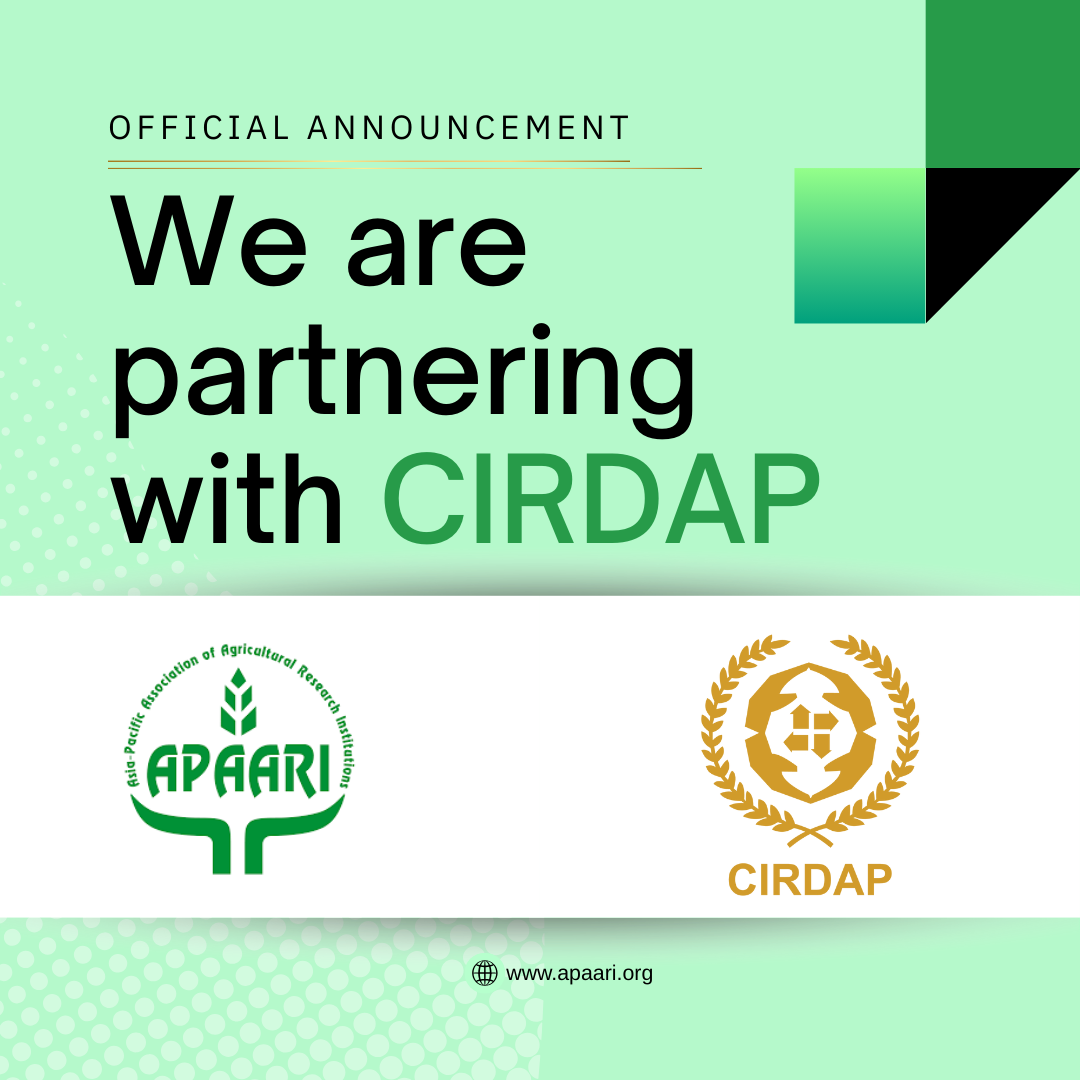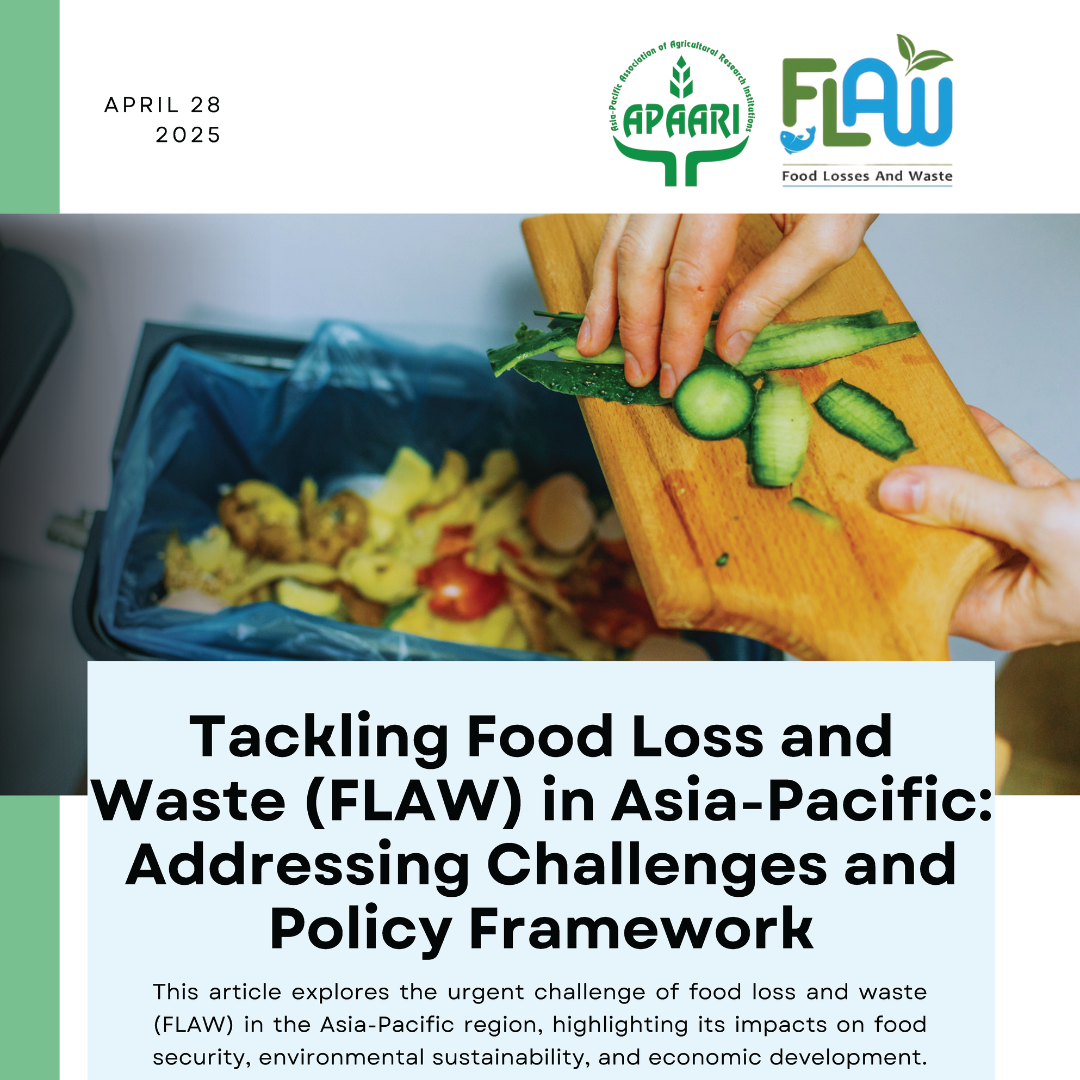As the world looks to its future food systems for sustained food and nutrition security, there is no doubt that innovation – through science and technology, policy, financing, institutional change, and capacity building – will play a key role in transforming these systems.
In this context, the Asia-Pacific Association of Agricultural Research Institutions (APAARI), and Commission for Sustainable Agriculture Intensification (CoSAI) are bringing together agri-food systems experts and decision-makers from our region, to discuss and validate the current state of investment in agricultural innovation based on recently conducted studies by CoSAI. The aim is to explore how to overcome constraints to the development and uptake of key innovations for Sustainable Agricultural Innovation (SAI).
To support the required major boost in global support to innovation in agricultural systems that is urgently needed to reach the UN Sustainable Development Goals (SDGs), APAARI and CoSAI are organizing the following dialogue series:
- The innovation investment landscape and future food systems – 28 September 2021
- Decision support tools to enhance the impact of innovation investment – 21 October 2021
- The way forward in the Asia-Pacific for innovation investment – a Side Event of the TAP Partners Assembly (the week of 22-26 November 2021)
Each dialogue’s theme will also be explored in the context of TAP priority areas for supporting capacity development for AIS in the region. Specifically, it will look into the enabling environment, partnerships and capacity development for innovation. The outcomes will feed into the Regional Agricultural Innovation Forum being developed under the current partnership between APAARI, TAP and Asia-Pacific Islands Rural Advisory Services Network (APIRAS).
Dialogue 1: The innovation investment landscape and future food systems
The first dialogue will focus on the first two pieces of CoSAI evidence, the Innovation Investment Study (IIS), and the Investment Gap Study (IGS). IIS provides an insight into the baseline of current innovation investment in the Global South. This is showing that there is roughly USD 60 billion spent on innovation annually. Though, the most concerning aspect of these findings is that only 7% of this investment has explicit environmental objectives and of this 7%, only half specifies explicit social objectives.. The Chinese Government contributes 30% of the total spending on innovation investment in the Global South. Other national governments and the private sector are also important investors, contributing upwards of 55% of the current investment. The second piece of evidence, IGS, looks at the innovation investment gap and what can be achieved if we fill this gap. The model suggests that roughly USD 15.2 billion per year is missing in the innovation investment landscape. The study proposes that if this gap was filled, spreading investment across R&D, technical support for climate change, and water infrastructure modernization. Filling the gap in this way could make significant progress on SDG2, reducing the risk of hunger (to 5%) across the Global South with the exception of sub-Saharan Africa, where the risk of hunger would half as well as making significant progress on agriculture’s commitment to the Paris Agreement, and improving water resource sustainability.
The Dialogue will also draw on the findings of the regional report of the Agricultural Science and Technology Indicators (ASTI) published in 2020, highlighting some key evidence.
The expected outcomes of Dialogue 1 will include:
CoSAI will develop key guiding questions for the participants in the Dialogue to enable APAARI to design innovative facilitation and engagement processes to enhance learning and knowledge sharing on the Dialogue topic. It will link with APAARI/APIRAS work on strengthening agricultural innovation systems (AIS) through the focus on enabling environment.
Dialogue 2: Decision support tools to enhance the impact of innovation investment
The second dialogue would take this understanding of the investment landscape (Dialogue 1) and discuss the decision support tools needed for more effective investment, and to effectively fill the gap. The decision support tools are being developed through a range of research-based studies in the following manner:
- instruments and approaches – the study will critically compare a range of approaches and financial instruments used to stimulate and support innovation in agriculture at scale. It will summarize the state of evidence on how well different investment approaches and instruments to innovation have worked in supporting the multiple objectives of SAI, and develop lessons and guidance based on this evidence to aid innovators and investors.
- pathways for innovation – CoSAI has commissioned three-country case studies that are systematically looking at Sustainable Agricultural Intensification (SAI) innovation successes at scale in three types of agriculture: small-scale, medium- to large-scale, and urban and peri-urban. The study examines which factors led to success and how the cases measure up in terms of meeting and managing the trade-offs between diverse SAI objectives (environmental, social, and economic). This study will be used to provide lessons and synthesis to support decision making on effective and sustainably reaching and maintaining scale;
- principles and metrics there is a major challenge for both implementers and investors in innovation in deciding whether an investment in innovation ‘counts’ as likely to promote sustainable agri-food systems (SAS). To help resolve this challenge, CoSAI is developing a clear set of principles for innovations and innovation processes that promote SAS, together with guidance and metrics supporting those principles. These will be implementable, sector wide, to plan, guide, and monitor progress against SAS objectives.
These decision-making tools are crucial for improving the effectiveness of innovation on impacting future food systems and can be used by decision makers to improve their innovation investments.
Please Download Programme here
Dialogue 3: The way forward in the Asia-Pacific for innovation investment
The third and final dialogue will take into account the investment landscape and the decision-making tools and develop a vision for innovation investment in the region through to 2030, including a vision of the future food systems of the region. It would also aim to build a coalition of likeminded stakeholders, including investors, to start to plan out the implementation of this vision in the region.
Participants
- National Agricultural Research System (NARS)
- International agricultural research centres
- Higher education
- Rural advisory services
- Civil society (farmer and women organizations, and NGOs)
- Private sector.
- Multilateral bodies, including UN agencies
Relevant organizations from the region interested to participate in the webinar series are kindly requested to fill in the nomination form. This collective action is envisioned to help build public and private support for boosting innovation ihttps://bit.ly/396U1DFn agriculture and influencing the scaling up of Sustainable Agricultural Intensification in the Asia-Pacific region.


